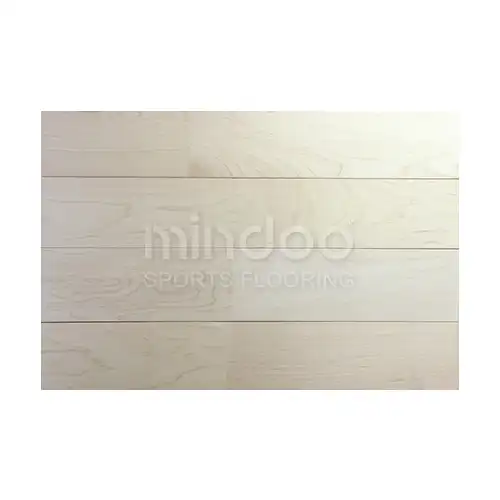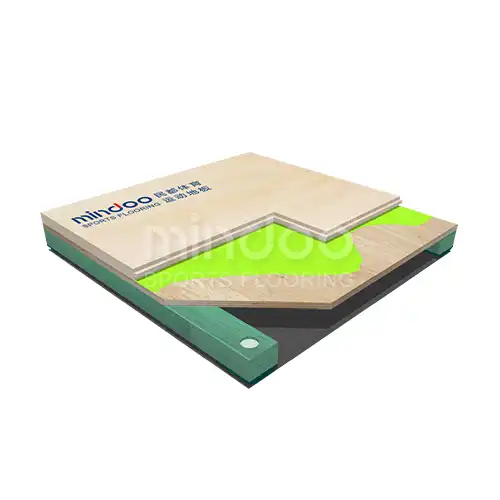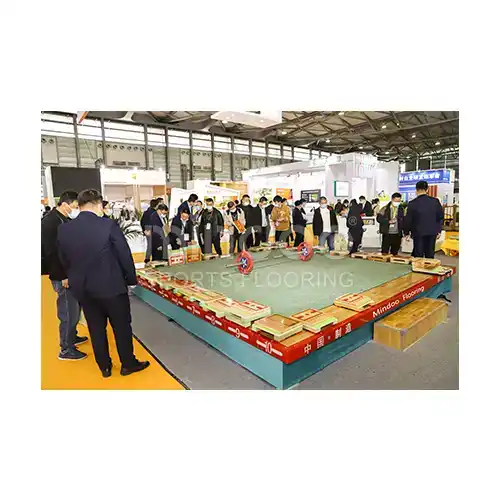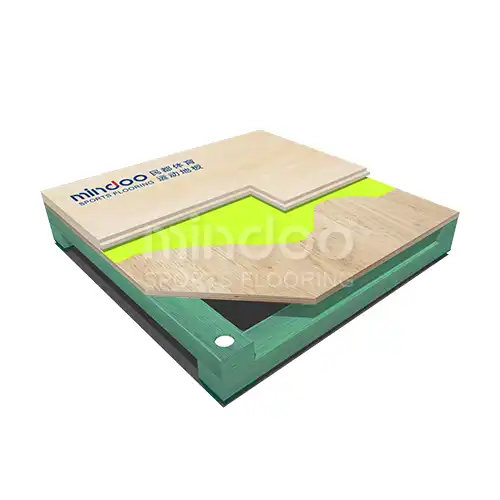Emerging Trends in Sports Hardwood Flooring: Innovations in Material Density and Strength Enhancement
In recent years, sports hardwood flooring has seen significant developments thanks to advancements in material science. The evolution of hardwood flooring, particularly in the context of sports applications, has transitioned from traditional approaches to more advanced materials that prioritize both durability and performance. The ongoing research into modifying wood density and strength has sparked innovation, resulting in floors that not only meet but exceed the demanding standards of professional sports facilities. This article explores the key trends, challenges, and future directions in enhancing hardwood materials for sports flooring.

Rethinking Wood for Performance Flooring
Sports floors, especially those used in basketball courts, volleyball arenas, and gymnasiums, must withstand heavy impacts, constant use, and environmental stress. Historically, hardwood such as maple was the material of choice. However, as sports evolve, so does the need for materials that are more resilient, sustainable, and capable of maintaining long-term performance.
The central theme in current research revolves around modifying wood’s intrinsic properties—primarily its density and strength. The goal is to enhance the material’s performance without compromising its natural appeal and sustainability. As sports flooring demands rise, manufacturers are looking beyond simple wood species selection and delving deeper into materials engineering.
The Role of Density in Impact Resistance
Wood density plays a crucial role in how resilient a floor surface is to impact. Hardwood, by nature, offers excellent shock absorption, but it also needs to have enough rigidity to withstand force without significant deformation. A major focus in modern hardwood research is altering wood density, either by modifying the wood itself or by incorporating synthetic treatments and additives to enhance its structural properties.
Researchers are experimenting with techniques like controlled drying processes, heat treatment, and densification methods. These approaches increase the compactness of the wood fibers, allowing the material to resist deformation under heavy impact. Such innovations not only improve the strength of the floor but also help maintain the floor's structural integrity over time, preventing warping or cracking that could compromise its performance.

Strength Enhancement Through Hybrid Materials
Another major trend is the incorporation of hybrid materials—combining wood with other substances to increase overall strength. For instance, research into layering wood with composite materials, resins, or even polymers is gaining traction. These hybrid floors combine the best of both worlds: the natural aesthetic of wood with the strength and durability of synthetic substances.
One of the most promising applications is the use of engineered wood products (EWPs), which offer a more consistent grain structure and enhanced mechanical properties compared to solid wood. Cross-laminated timber (CLT) is an example of such innovation. By layering wood in perpendicular orientations, CLT increases the strength and dimensional stability of the material, making it a top contender in sports flooring applications.
Additionally, treatments like acetylation and other chemical modifications are being explored to further enhance the wood’s performance. Acetylation, for example, reduces the hygroscopicity of wood, making it less prone to absorbing moisture and more resistant to warping or shrinking with changing humidity levels. This improvement is especially valuable in high-moisture environments like gyms or indoor courts.

Sustainability Meets Strength: A Balanced Approach
The balance between performance and sustainability is a crucial consideration. As the demand for greener products increases, the environmental impact of material sourcing and production becomes more important. Fortunately, innovations in wood processing and treatment methods are also leading to more sustainable solutions.
For example, the use of certified sustainable wood sources, combined with advanced wood densification methods, can significantly reduce the need for resource-intensive materials while ensuring longevity and quality. Furthermore, some emerging treatments focus on enhancing the durability of wood without resorting to synthetic chemicals, providing an eco-friendly option for sports flooring.
Additionally, the trend toward using recycled wood or repurposed materials in conjunction with modern treatment techniques helps minimize waste while maintaining the high-performance standards required for sports applications.

The Future: Customization and Smart Flooring
Looking ahead, the future of sports hardwood flooring lies in customization and "smart" technologies. With the rise of IoT (Internet of Things) and sensor technologies, it’s possible to imagine sports floors that not only perform well but also provide real-time data about their condition and usage. For example, sensors embedded within the floor could track foot traffic, wear patterns, or impact forces, enabling facilities to maintain optimal performance levels and adjust maintenance schedules proactively.
In terms of materials, the next frontier may involve even more sophisticated modifications of wood's cellular structure at a microscopic level. Nanotechnology, for instance, could help enhance the natural properties of wood, making it stronger, more durable, and more resistant to environmental factors, all while maintaining its natural aesthetic.
The integration of advanced treatments and hybrid materials will shape the next generation of sports floors, delivering a safer, more durable, and environmentally friendly experience for athletes and facility managers alike.





